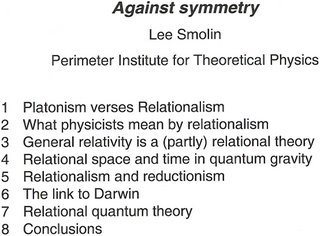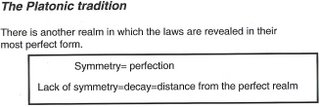 | |
Shape as Memory : A Geometric Theory of ArchitecturealsoThe structure of paintings |
I just wanted to lay out a perspective in relation to how one might describe the engine in relation to the design of the exhaust system as supportive of the whole frame of reference as the engine.
The pipe is a resonant chamber which shapes the exhaust pulse train in a way which uses shock waves to constrain the release of the combustion.Russell Grunloh (boatguy)I mean it is not wholly certain for me that without perception, once realizing that potential recognizes that like some "source code" we are closer to recognizing the seed of our action, is an expression of the momentum of our being. It is a stepping off of all that we have known, is an innate expression of our being in action.
So as souls, we are immortalized as expressions of, like a memory that tells a story about our life, our choices and the life we choose to live.
Dr. Mark Haskins
On a wider class of complex manifolds - the so-called Calabi-Yau manifolds - there is also a natural notion of special Lagrangian geometry. Since the late 1980s these Calabi-Yau manifolds have played a prominent role in developments in High Energy Physics and String Theory. In the late 1990s it was realized that calibrated geometries play a fundamental role in the physical theory, and calibrated geometries have become synonymous with "Branes" and "Supersymmetry".
Special Lagrangian geometry in particular was seen to be related to another String Theory inspired phemonenon, "Mirror Symmetry". Strominger, Yau and Zaslow conjectured that mirror symmetry could be explained by studying moduli spaces arising from special Lagrangian geometry.
This conjecture stimulated much work by mathematicians, but a lot still remains to be done. A central problem is to understand what kinds of singularities can form in families of smooth special Lagrangian submanifolds. A starting point for this is to study the simplest models for singular special Lagrangian varieties, namely cones with an isolated singularity. My research in this area ([2], [4], [6]) has focused on understanding such cones especially in dimension three, which also corresponds to the most physically relevant case.
So it is also about string theory in a way for me as well, and my attempts to understand those expressions in the valley. Poincare's description of a pebble, rolling down from the hilltop.
It follows then that not all comments will not all be accepted, yet, I felt it important for one to recognize what Poincare was saying and what I am saying.
HENRI POINCARE Mathematics and Science:Last Essays
Since we are assuming at this juncture the point of view of the mathematician, we must give to this concept all the precision that it requires, even if it becomes necessary to use mathematical language. We should then say that the body of laws is equivalent to a system of differential equations which link the speed of variations of the different elements of the universe to the present values of these elements.
Such a system involves, as we know, an infinite number of solutions, But if we take the initial values of all the elements, that is,their values at the instant t =(which would correspond in ordinary language to the "present"), the solution is completely determined, so that we can calculate the values of all the elements at any period
whatever, whether we suppose />0, which corresponds to the "future," or whether we suppose t<0, which corresponds to the "past." What is important to remember is that the manner of inferring the past from the present does not differ from that of inferring the future from the present.
Contrast the pebble as an issuance of, from symmetry, and the top of mountain(a sharpened pencil standing straight up) and the decay(asymmetry), as an expression of the solidification of who we are in that valley. as a pebble?? After the example, we are but human form with a soul encased. The present, is our future? Our past, our presence?
Mathematics and Science: Last Essays, by Henri Poincare
8 Last Essays
"But it is exactly because all things tend toward death that life is
an exception which it is necessary to explain.
Let rolling pebbles be left subject to chance on the side of a
mountain, and they will all end by falling into the valley. If we
find one of them at the foot, it will be a commonplace effect which
will teach us nothing about the previous history of the pebble;
we will not be able to know its original position on the mountain.
But if, by accident, we find a stone near the summit, we can assert
that it has always been there, since, if it had been on the slope, it
would have rolled to the very bottom. And we will make this
assertion with the greater certainty, the more exceptional the event
is and the greater the chances were that the situation would not
have occurred."
Of course I do not believe our lives are just an expression of chance, but choice as "a memory" we choose. Of course too, how do you set up a life as an expression if you do not continue to learn?
In the pool of symmetry, how did we ever begin? I looked for such expressions as if mathematically deduced from a time where we might be closer to the idea of such a pool. Ramanujan comes to mind.
Then too, if we are to become spiritually immersed back again from where we came from, then how can we individually be explained "as a spark of measure," for each soul as a memory to be chosen from all that has existed before, for such an expression in this life as the task of it's future??

























